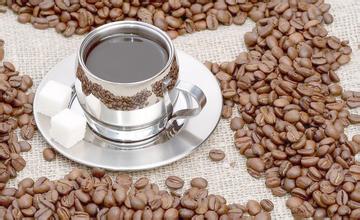Introduction of the main coffee bean producing areas in Honduras Santa Barara Manor San Juan Heido
Honduras coffee is imported from El Salvador. Coffee production was lukewarm until the Brazilian frost of 1975. Brazil was hit hard, coffee production plummeted, while Honduras took advantage of the opportunity to "rise", coffee production soared from 500,000 bags to 1.8 million bags, and was looted. Since then, coffee production in Honduras has really developed. Honduras is a mountainous country in Central and North America with a population of more than 8.3 million and an area of about 112,000 square kilometers. Located in northern Central America. It is bordered by the Caribbean Sea to the north, the Gulf of Fonseca in the Pacific Ocean to the south, Nicaragua and El Salvador to the east and south, and Guatemala to the west. More than three-quarters of the territory is mountainous and plateau. Mountains extend from west to east, inland for lava plateau, multi-mountain valley, coastal plains. Tropical climate, coastal plain belongs to tropical rain forest climate for coffee production, Honduras geographical conditions are no less than its neighboring coffee producing countries such as Guatemala and Nicaragua, Honduras has 280,000 hectares of coffee plantations, mainly small coffee plantations, most of which are less than 3.5 hectares. These coffee plantations account for 60% of the coffee production in Honduras. In the coffee plantations, because the plantations belong to mountainous areas, So coffee beans are picked by hand and carefully processed to produce better coffee beans. Honduras harvests 3 million bags of coffee every year, providing a variety of coffee quality to everyone, and is now one of the top ten coffee exporters in the world.

Important Notice :
前街咖啡 FrontStreet Coffee has moved to new addredd:
FrontStreet Coffee Address: 315,Donghua East Road,GuangZhou
Tel:020 38364473
- Prev

Light and pure flavor of Costa Rican coffee beans introduce the flavor of Costa Rican coffee
Tarrazu in Costa Rica is one of the major coffee producing areas in the world. The coffee produced is light and pure in flavor and pleasant in aroma. Costa Rica, with its fertile volcanic soil and good drainage, is the first country in Central America to grow coffee and bananas for commercial value. Coffee and bananas are the country's main exports. In 1729, coffee was introduced from Cuba to Goth.
- Next

Introduction to Valenford Coffee Flavor Flavor Manor of Jamaican Fine Coffee
Coffee is the main cash crop in Jamaica, and coffee farms are all over the island. But only in the four administrative regions of St. Andrew, Portland, St. Thomas and St. Mary, certified by the Jamaica Coffee Industry Council (Coffee Industry Board of Jamaica,CIB), coffee grown in the Blue Mountains above 2000 feet above sea level is allowed to be called Tooth Buy.
Related
- Does Rose Summer choose Blue, Green or Red? Detailed explanation of Rose Summer Coffee plots and Classification in Panamanian Jade Manor
- What is the difference between the origin, producing area, processing plant, cooperative and manor of coffee beans?
- How fine does the espresso powder fit? how to grind the espresso?
- Sca coffee roasting degree color card coffee roasting degree 8 roasting color values what do you mean?
- The practice of lattes: how to make lattes at home
- Introduction to Indonesian Fine Coffee beans-- Java Coffee producing area of Indonesian Arabica Coffee
- How much will the flavor of light and medium roasted rose summer be expressed? What baking level is rose summer suitable for?
- Introduction to the characteristics of washing, sun-drying or wet-planing coffee commonly used in Mantenin, Indonesia
- Price characteristics of Arabica Coffee Bean Starbucks introduction to Manning Coffee Bean Taste producing area Variety Manor
- What is the authentic Yega flavor? What are the flavor characteristics of the really excellent Yejasuffi coffee beans?

